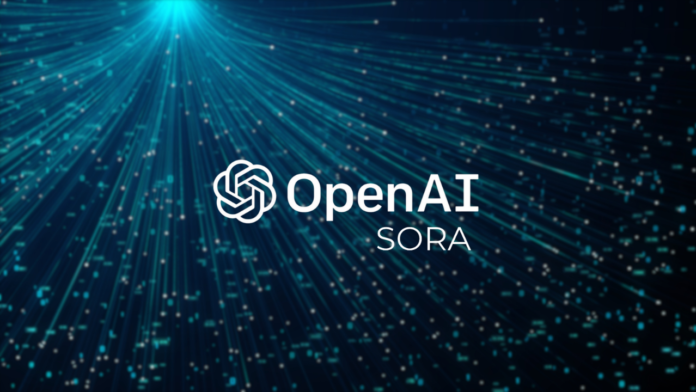In the rapidly evolving landscape of artificial intelligence, OpenAI has once again pushed the boundaries of what’s possible with the launch of Sora, a groundbreaking AI video generation application. While the technology promises to democratize video creation, it has simultaneously ignited fierce debates about copyright, creative ownership, and the future of content production.
What is Sora?
Sora represents OpenAI’s ambitious entry into AI-powered video generation. This innovative application allows users to create short videos—typically around 10 seconds in length—simply by providing text prompts. The recently launched Sora 2 version brings significant improvements in video-audio synchronization, realistic rendering, and user control over the final output.
One of Sora’s most intriguing features is the Cameo function, which enables users to create personalized avatars. By uploading short video and audio clips of themselves, users can generate content featuring their own likeness. This capability opens exciting creative possibilities while simultaneously raising concerns about identity and consent.
To address transparency concerns, OpenAI has committed to embedding watermarks and provenance metadata in all Sora-generated videos, clearly identifying them as AI-created content. This move aims to combat misinformation and help viewers distinguish between human-created and AI-generated material.
The Copyright Conundrum
The launch of Sora has thrust copyright issues into the spotlight, revealing the complex legal and ethical terrain that AI-generated content must navigate. OpenAI has introduced an “opt-out” mechanism, allowing copyright holders to request that their content not be used in training or generating videos through Sora. However, this approach has drawn significant criticism from various quarters.
Major entertainment companies, including Disney, have already placed their content on Sora’s opt-out list, signaling the industry’s wariness about AI potentially repurposing their intellectual property. The fundamental concern revolves around whether AI systems should be allowed to learn from copyrighted material and create derivative works that might compete with or devalue original content.
Critics argue that the opt-out model places the burden on copyright holders rather than requiring explicit permission for the use of protected works. This “opt-out” versus “opt-in” distinction represents a fundamental philosophical divide about how AI should interact with existing creative works.
Furthermore, questions persist about the effectiveness of content filtering systems. While OpenAI claims to block prompts that might generate videos featuring copyrighted characters or public figures without permission, the practical implementation of such safeguards remains uncertain. Can these systems truly prevent unauthorized use of intellectual property at scale?
The Double-Edged Sword: Benefits and Risks
The Promise of Innovation
Sora and similar AI video tools offer undeniable advantages:
Creative Democratization: Individuals without technical video production skills can now create compelling visual content, potentially leveling the playing field for independent creators and small businesses.
Efficiency and Speed: Tasks that once required hours of filming, editing, and post-production can now be accomplished in minutes, dramatically accelerating content creation workflows.
Remixing and Experimentation: The ability to modify elements, combine concepts, and explore creative variations becomes exponentially easier, potentially fostering new forms of artistic expression.
The Shadow of Concern
However, these benefits come with significant risks:
Copyright Infringement: The line between inspiration and theft becomes blurred when AI systems trained on copyrighted material generate new content that may inadvertently replicate protected elements.
Misinformation and Deepfakes: AI-generated videos that appear realistic can be weaponized to spread false information, manipulate public opinion, or damage reputations—concerns that become more acute when the technology becomes widely accessible.
Privacy and Identity Theft: Features like Cameo, while innovative, could be misused to create unauthorized videos of individuals, raising serious concerns about consent and digital identity protection.
Economic Impact on Creators: As AI-generated content proliferates, human creators—videographers, animators, actors—may find their work devalued or their livelihoods threatened by cheaper, faster AI alternatives.
Navigating the New Landscape: A Path Forward
As Sora and similar technologies become integrated into our digital ecosystem, several principles should guide our approach:
1. Informed and Responsible Use
Users must educate themselves about copyright law and the ethical implications of AI-generated content. Understanding the terms of service, limitations, and potential consequences of using these tools is essential for responsible adoption.
2. Proactive Protection
Content creators should actively monitor and utilize opt-out mechanisms when available. However, advocacy for stronger protections—including opt-in requirements—remains crucial for establishing fair standards.
3. Legal Literacy
Staying informed about evolving copyright laws and digital content regulations in your jurisdiction helps creators protect their work and users avoid legal pitfalls. The legal framework is struggling to keep pace with technological advancement, making ongoing education essential.
4. Transparency and Attribution
When using AI-generated content, clear disclosure of its artificial origins and proper attribution to any source materials demonstrates ethical responsibility and helps maintain trust with audiences.
5. Media Literacy Education
As AI-generated content becomes indistinguishable from human-created material, developing critical viewing skills becomes essential. Teaching people to verify content authenticity and recognize potential manipulation protects communities from misinformation.
Technology Meets Ethics
OpenAI’s Sora represents more than just technological progress—it embodies a fundamental challenge to our understanding of creativity, ownership, and authenticity. The tool’s capabilities force us to confront difficult questions: Who owns creativity when machines can generate content? How do we balance innovation with the protection of intellectual property? What responsibility do technology companies bear for how their tools are used?
The answers to these questions will shape not just the future of content creation but the broader relationship between artificial intelligence and human creativity. As we stand at this crossroads, the choices we make—as users, creators, policymakers, and citizens—will determine whether AI becomes a force that amplifies human potential or one that undermines the value of human creative work.
Sora’s launch is both an invitation and a warning: we can harness AI to expand our creative horizons, but only if we approach it with wisdom, responsibility, and a clear-eyed understanding of both its promise and its perils. The technology is here; the question now is how we choose to use it.


